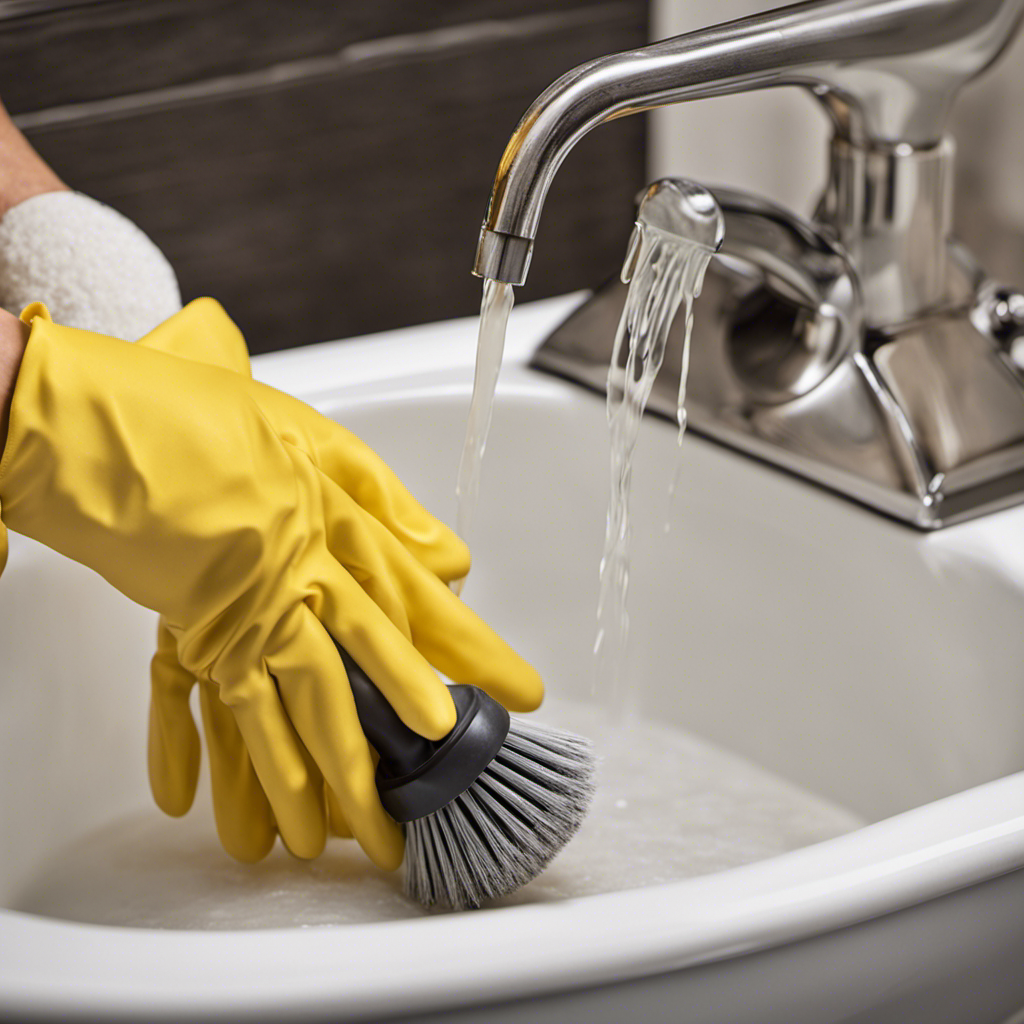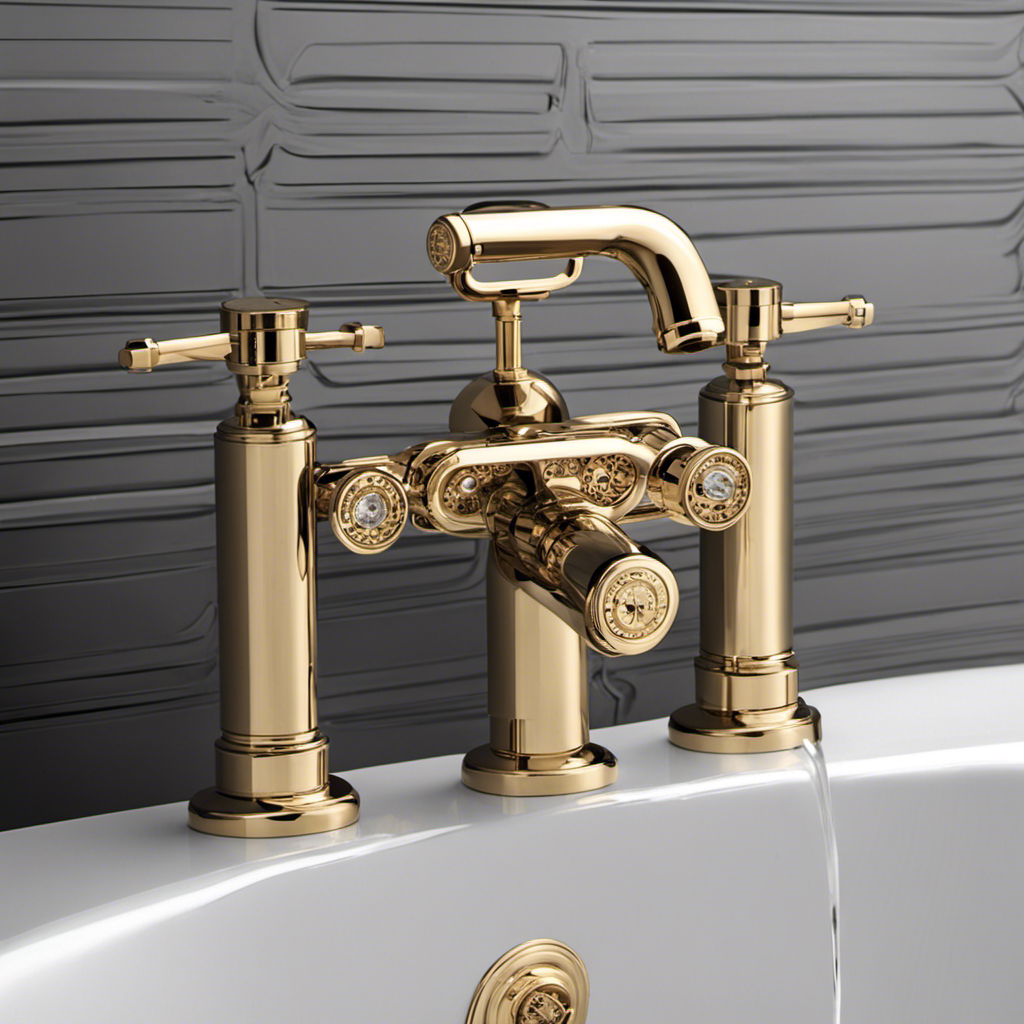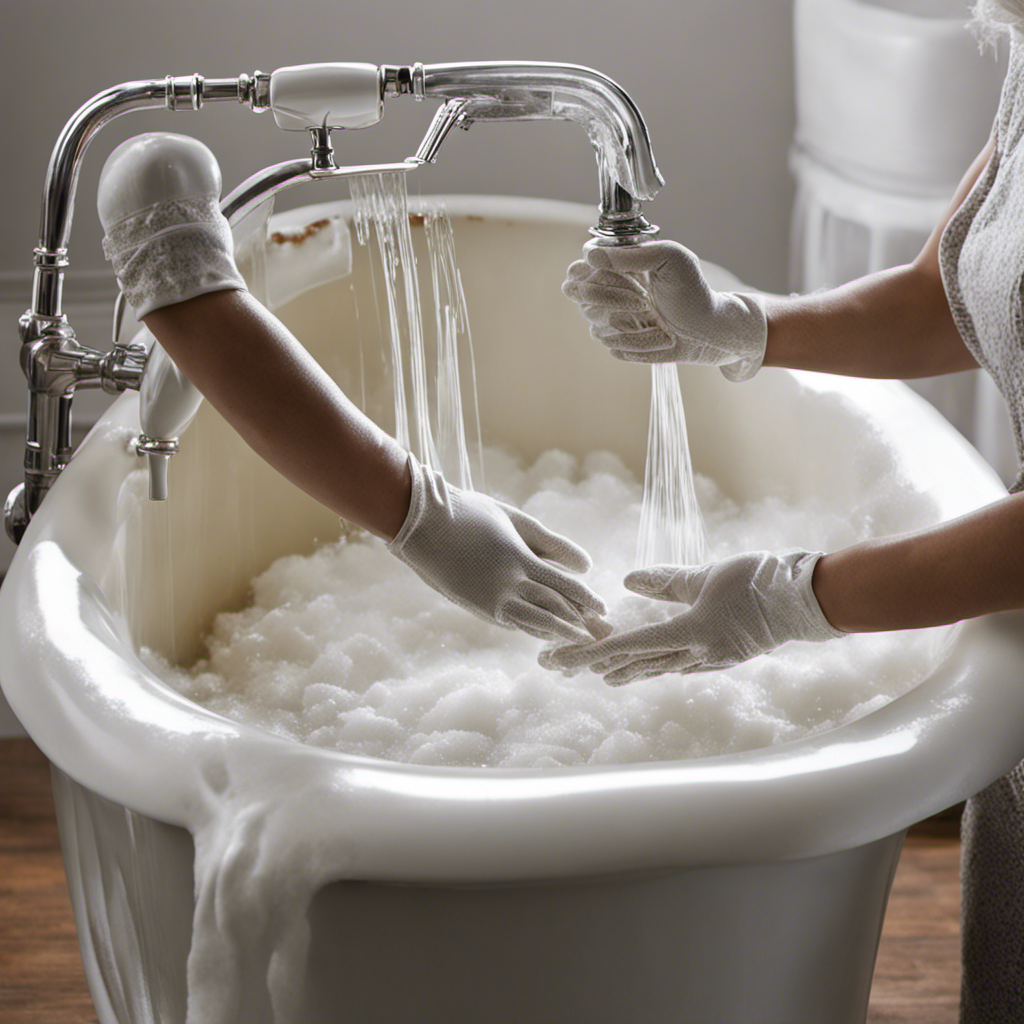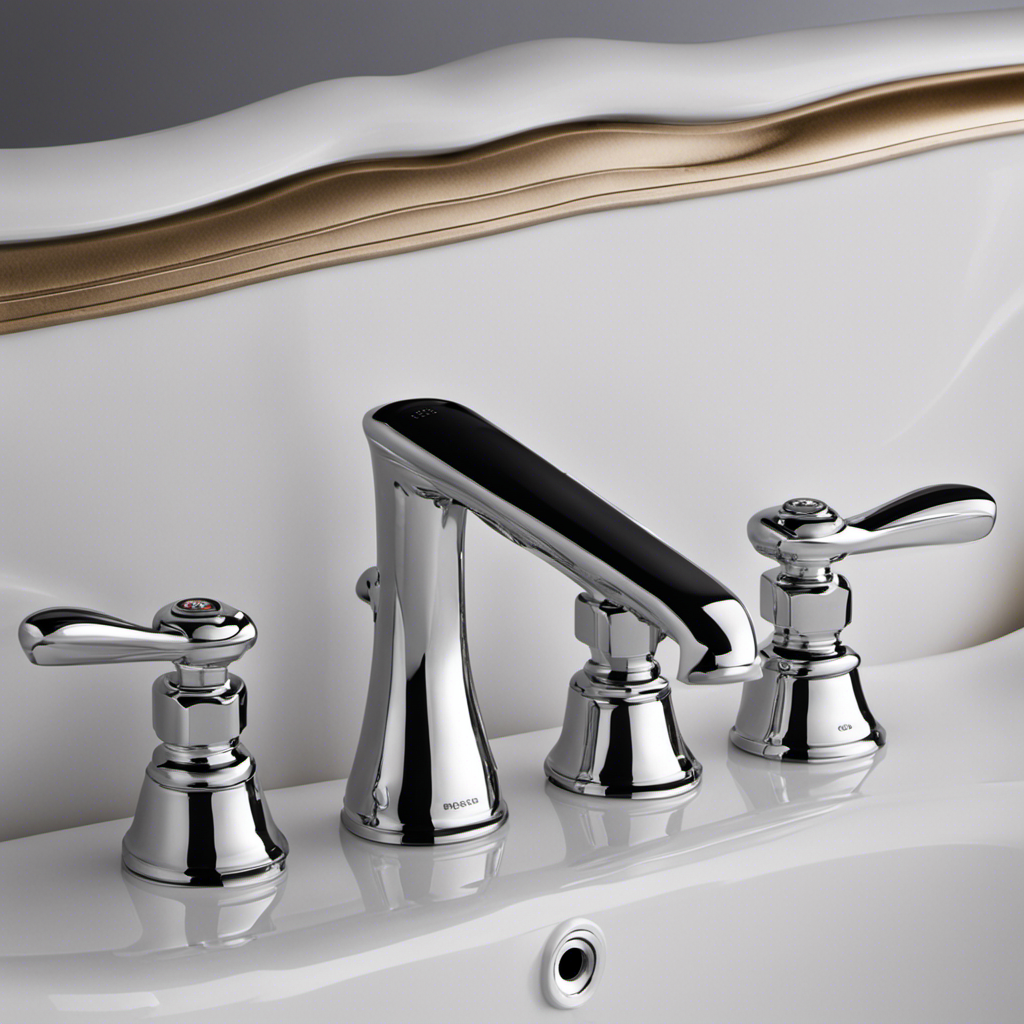Hey there!
So, you’re probably here because you’re tired of standing in ankle-deep water every time you take a shower. Trust me, I’ve been there too.
But fear not, my friend, because I’ve got the solution for you – a step-by-step guide on how to get your bathtub to drain like a champ.
From the common causes of clogs to the preventive measures you can take, I’ve got all the expert tips and tricks to keep your drain clear and your showers stress-free.
Let’s dive in, shall we?
Key Takeaways
- Regularly clean the drain stopper and remove accumulated gunk
- Use a drain strainer to prevent hair and debris from entering the drain
- Flush the drain with hot water once a week to prevent buildup
- If there are serious blockages or damage, it is advisable to call a professional plumber.
Common Causes of Bathtub Clogs
One common cause of bathtub clogs is hair getting caught in the drain. Hair, especially long strands, easily accumulates in the drain over time and can lead to a slow or completely blocked drain. To prevent bathtub clogs, it is important to regularly clean the drain by removing any visible hair or debris. Additionally, using a drain strainer can help catch hair before it goes down the drain.
If a clog does occur, there are natural remedies that can be used to clear it. Pouring a mixture of baking soda and vinegar down the drain followed by hot water can help dissolve the clog. Another option is using a plunger to create suction and dislodge the clog.
Transitioning into the next section, it is important to have the right tools and supplies on hand to effectively unclog a bathtub drain.
Tools and Supplies Needed for Unclogging a Bathtub Drain
To unclog a bathtub drain, you’ll need a plunger, a drain snake, and some baking soda and vinegar. These tools and supplies are essential for effectively clearing a clogged drain. Let’s take a closer look at each one:
| Tool/Supply | Description |
|---|---|
| Plunger | A rubber suction cup attached to a wooden or plastic handle. Used for creating pressure to dislodge the clog. |
| Drain Snake | A long, flexible wire with a coiled or barbed end. Used for physically removing the clog by breaking it apart or pulling it out. |
| Baking Soda and Vinegar | A natural and chemical-free alternative to unclog drains. The combination of baking soda and vinegar creates a fizzy reaction that helps break down the clog. |
When it comes to plunging techniques, it’s important to create a tight seal around the drain with the plunger. Use quick and forceful plunges to generate pressure and dislodge the clog. As for chemical drain cleaners, they can be effective but also pose risks to your health and the environment. It’s best to use them as a last resort and follow the instructions carefully.
Step-by-Step Guide to Clearing a Bathtub Drain
Start by preparing the plunger, drain snake, and baking soda and vinegar mixture for clearing the clog in your bathtub. Here’s a step-by-step guide to help you unclog your bathtub drain using natural drain cleaners:
-
Plunger Method:
- Fill the tub with enough water to cover the plunger.
- Place the plunger over the drain and push down firmly.
- Use a vigorous up-and-down motion to create suction and dislodge the clog.
- Repeat as necessary until the water drains freely.
-
Drain Snake Method:
- Insert the drain snake into the drain and rotate it clockwise to catch the clog.
- Slowly pull out the snake, removing any debris or hair along the way.
- Flush the drain with hot water to clear any remaining residue.
-
Baking Soda and Vinegar Method:
- Pour half a cup of baking soda down the drain.
- Follow it with one cup of vinegar.
- Let the mixture sit for about 30 minutes.
- Flush the drain with hot water.
-
Maintenance Tips:
- Use a drain cover to prevent hair and debris from entering the drain.
- Regularly clean the drain stopper and remove any accumulated gunk.
- Flush the drain with hot water once a week to prevent buildup.
Preventive Measures to Keep Your Bathtub Drain Clear
Regularly cleaning the drain stopper and removing any accumulated gunk helps prevent clogs in your tub. It is important to keep your bathtub drain clear to avoid any future plumbing issues.
In addition to regular cleaning, there are also natural remedies that can help clear a clogged bathtub drain. One effective remedy is using a mixture of baking soda and vinegar. Simply pour half a cup of baking soda down the drain, followed by half a cup of vinegar. Let it sit for about 30 minutes, then flush it with hot water.
Another tip for maintaining a clean and efficient bathtub drain is to use a drain strainer. This will catch any hair or debris before it goes down the drain, preventing clogs.
When to Call a Professional for Bathtub Drain Issues
If your bathtub drain issues persist despite attempting DIY remedies, it’s time to call a professional for assistance. Here are four signs that indicate you may need to hire a professional plumber for your bathtub drain issues:
-
Slow draining: If your bathtub takes longer than usual to drain, it could be a sign of a clogged or damaged drain. A professional plumber can diagnose the issue and provide the necessary repairs or replacements.
-
Foul odors: Unpleasant odors coming from your bathtub drain could indicate a buildup of debris or even a broken sewer pipe. A professional plumber can identify the source of the odor and fix the problem.
-
Water backup: If water starts to back up into your bathtub or other drains in your home, it could be a sign of a serious blockage or a damaged drain. A professional plumber has the tools and expertise to address the issue effectively.
-
Frequent clogs: If you find yourself dealing with frequent clogs in your bathtub drain, it may be time to call a professional plumber. They can assess the underlying cause of the clogs and provide a long-lasting solution.
When it comes to the cost of hiring a professional plumber for bathtub drain issues, it can vary depending on the severity of the problem and the plumber’s rates. However, it’s important to remember that investing in professional assistance can save you from further damage and costly repairs in the future.
Conclusion
In conclusion, unclogging a bathtub drain can be a frustrating and time-consuming task, but with the right tools and knowledge, it is definitely possible to do it yourself.
By following the step-by-step guide and taking preventive measures, you can keep your bathtub drain clear and avoid future clogs.
However, in some cases, it may be necessary to call a professional if the clog persists or if you are unsure of how to proceed.
Remember, investigating the truth of a theory can add depth and complexity to your understanding of how to effectively unclog a bathtub drain.










